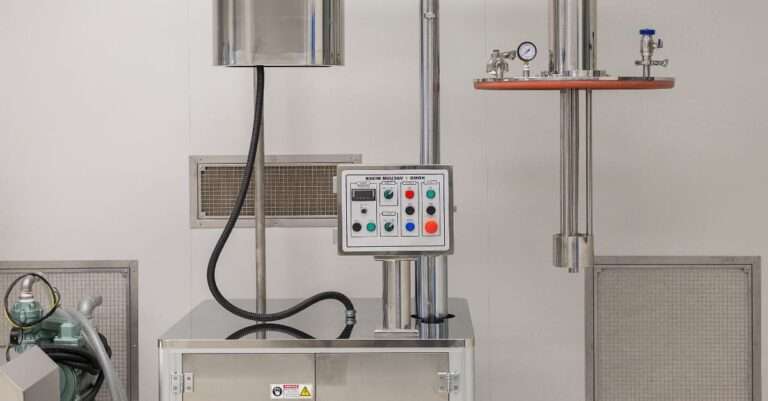The Hidden Costs of Inaccurate Drywall Estimating: Why You Can’t Afford to Get it Wrong
Accurate drywall estimating is not just about getting the numbers right; it’s about ensuring the success of your project. Poor estimation can lead to costly overruns, delays, and project failure. For contractors and construction professionals, an accurate estimate fosters client trust and ensures profitability. For DIY enthusiasts, it helps manage budgets and timelines effectively. In this blog, we’ll explore why getting your drywall estimates spot-on is critical.
Avoid Cost Overruns
Nothing derails a project faster than unexpected costs. If you underestimate your drywall needs, you spend more on last-minute purchases. Accurate drywall estimating helps budget effectively, avoiding those shocking cost overruns that can jeopardize your entire project.
Improve Time Management
Time is money in construction. An accurate estimate allows you to plan your work schedule efficiently. Knowing how much drywall you need and how long it will take to install helps you set realistic project timelines. This way, you can avoid unnecessary delays and keep your project on track.
Enhance Client Satisfaction
For contractors, a precise drywall estimate builds client trust. When clients see that you’ve accounted for all aspects of the project, they feel more secure and confident in your abilities. This not only leads to successful projects but also fosters long-term relationships and repeat business.
Key Factors Affecting Drywall Estimation
Understanding the factors influencing drywall estimation is the first step in mastering this art. From room dimensions to material costs, several elements play a crucial role. Here, we break down the key factors you need to consider for accurate drywall estimation.
- Room Dimensions
The size of the area to be drywalled is the most obvious factor to consider. Measure the height and width of each wall, and don’t forget to account for windows, doors, and other openings. Accurate measurements ensure you buy the right amount of drywall sheets.
- Material Costs
Material costs can vary significantly based on quality and type. Standard drywall is less expensive, but specialized boards like moisture-resistant or fire-resistant ones cost more. Make sure to factor in these variations to get an accurate estimate.
- Labor Costs
Labor is another significant cost component. Labor costs can fluctuate depending on the complexity of the job and the skill level required. Include estimates for installation and finishing work, as these are separate stages requiring different skill sets.
Best Practices for Accurate Drywall Estimating
Now that you understand the factors that affect drywall estimation, let’s discuss best practices to help you achieve more accurate results. These tips are designed to streamline the estimation process and increase your efficiency.
- Detailed Measurement
Always take precise measurements. Use a laser measurement for large areas to ensure accuracy. Double-check your measurements to avoid errors leading to material shortages or excess.
- Consider the Factor
Drywall installation involves cutting and fitting, which inevitably leads to some waste. Add a waste factor of around 10% to your total material estimate to account for this. This practice helps ensure you won’t run short of materials mid-project.
- Use Estimation Software
Leverage technology to make your job easier. Estimation software can automate the calculation process, reducing the risk of human error. These tools can also store previous estimates, making it easier to generate new ones based on past projects.
Tools and Technologies for Streamlining the Drywall Estimating Process
Modern tools and technologies have revolutionized the way we estimate drywall. From basic calculators to advanced software, these tools can help streamline the process and improve accuracy.
- Digital Calipers and Laser Measures
Digital calipers and laser measurements are highly accurate and essential for precise drywall estimations. These tools are easy to use and significantly reduce the margin of error compared to traditional measuring tapes.
- Estimation Software for drywall estimating
Software like PlanSwift, Bluebeam Revu, and On-Screen Takeoff offer advanced features for drywall estimation. These programs can handle complex calculations, produce detailed reports, and integrate with project management software for seamless workflow.
- Mobile Apps
For those who are always on the go, mobile apps like Construction Master Pro and BuildCalc are invaluable. These apps offer quick calculations and are especially useful for smaller projects or on-site adjustments.
Examples of Successful Drywall Estimating
- Commercial Office Space
A construction company working on a commercial office space utilized Bluebeam. The software’s advanced features enabled them to produce detailed floor plans and material lists, ensuring no room for error. Thanks to meticulous planning, the project was completed ahead of schedule and within budget.
- DIY Home Improvement
A DIY enthusiast successfully renovated their basement using BuildCalc. Despite having limited experience, the app’s user-friendly interface guided them through the estimation process. Following the app’s recommendations, they avoided common pitfalls and completed their project smoothly.
Tips for Contractors, Construction Professionals, and DIY Enthusiasts
Whether you’re a seasoned contractor or a DIY enthusiast, these tips will help you improve your drywall estimation skills. Implementing these practices can lead to more efficient and successful projects.
- Stay Updated on Material Prices
Material costs can fluctuate based on market conditions. Regularly check for price updates to ensure your estimates remain accurate. This practice is especially important for contractors who handle multiple projects concurrently.
- Collaborate with Suppliers
Build strong relationships with your suppliers. They can offer valuable insights into material quality and availability, helping you make informed decisions. Suppliers may also provide discounts for bulk purchases, reducing your overall costs.
- Continuous Learning for Drywall Estimating
The construction industry is constantly evolving. Attend workshops, webinars, and industry events to stay updated on the latest techniques and tools. Continuous learning will keep you ahead of the curve and improve your estimation skills.
The Future of Drywall Estimating
The construction industry is rapidly evolving, and so is the field of drywall estimation. Emerging technologies and innovative practices promise to make the estimation process even more accurate and efficient. Here’s a glimpse into the future of drywall estimation.
- AI and Machine Learning
Artificial Intelligence (AI) and machine learning algorithms are being integrated into estimation software. These technologies can analyze vast amounts of data to provide highly accurate estimates, identify patterns, and predict potential issues.
- Augmented Reality (AR)
Augmented Reality (AR) is making its way into construction. AR can overlay digital information onto the physical world, allowing for real-time measurements and adjustments. This technology can significantly reduce errors and improve efficiency.
- Sustainable Practices
Sustainability is becoming a key focus in construction. Future estimation practices will likely include factors like material sustainability and environmental impact. This shift will not only benefit the planet but also meet the growing demand for eco-friendly construction practices.
Conclusion
Mastering drywall estimation is essential for the success of any construction project. Accurate estimates save time, reduce costs, and improve client satisfaction. Understanding key factors, implementing best practices, and leveraging modern tools and technologies can enhance your estimation skills and ensure project success.
Ready to take your drywall projects to the next level? Start by incorporating these tips and tools into your workflow. For more personalized guidance, join our community of construction professionals and DIY enthusiasts. Together, we can build a brighter, more efficient future in construction.
[flexible-faqs id=’2582′]






